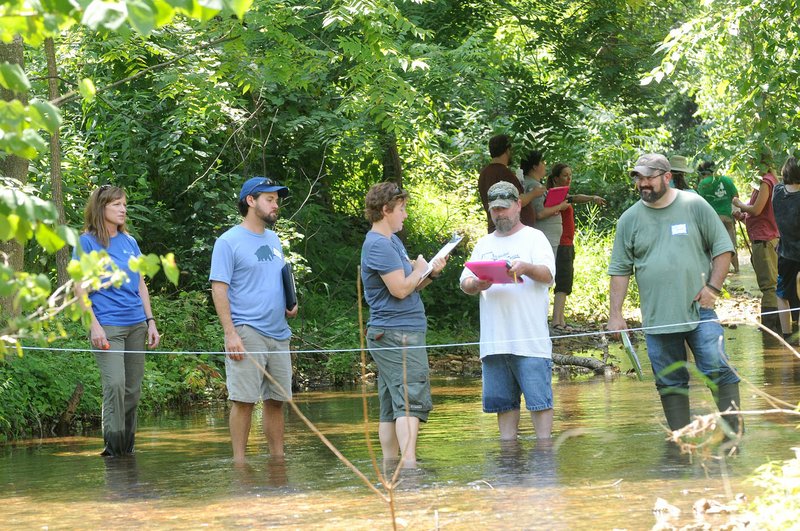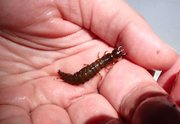Teams of volunteers work to ensure Northwest Arkansas has a high quality supply of drinking water.
The drinking water comes from Beaver Lake, but rivers and streams that meander across the landscape fill the reservoir like a faucet fills a bathtub. The waterways are checked regularly by volunteers in the Stream Smart program.
Quality control
The mission of Stream Smart is to collect long-term water quality data in the tributary streams of Beaver Lake and to increase awareness about the streams’ quality.
— Ozarks Water Watch
Some of the little creeks are so small they don't have names. Bigger streams, such as the War Eagle and White rivers, are the lake's main tributaries. Stream Smart volunteers adopt a creek or river. They do simple citizen science tests quarterly to keep tabs on the water quality.
About 60 volunteers are involved in the program, said Angela Danovi with Ozarks Water Watch, the nonprofit group that started Stream Smart in 2012.
Volunteers come and go for whatever reason, so new helpers are recruited. All go through training in the classroom and on the water to learn how to test their stream. They take a water sample that is sent to a lab for analysis. Volunteers also see what aquatic insects inhabit the stream. They measure how fast their adopted stream flows.
More than half of the Stream Smart volunteers are Northwest Arkansas master naturalists, Danovi said. Others are individuals or families or members of conservation and civic groups. High school and college students are involved.
This year's training was in July, and volunteers are already at work, Danovi said. All waterways in the Stream Smart program are in the Beaver Lake watersheds.
"Having these volunteers out in the field gives us the opportunity to get data that we otherwise couldn't get," she said.
There aren't enough water quality professionals in the area to do the volume of testing that Stream Smart teams do, Danovi added. She checks the data teams gather and looks for trends in the quality of each stream. Water samples are analyzed at the Arkansas Water Resources Center at the University of Arkansas.
Not that it's all work. Laughter swirled in the mix of technical talk and information at this summer's training day on a stream in Rogers.
"We all like to play in creeks," said David Nystrom, a high school student who was training with his family. "We study this stuff in school, but this takes what we learn and makes it real." The Nystroms have adopted a creek near Fayetteville.
Nystrom and other Stream Smart students appeared to be dancing in Prairie Creek, which flows out of Lake Atalanta and into Beaver Lake. The fancy footwork dislodged tiny insect larvae that flowed into hand-held nets. On shore, students identified their catch. The presence of hellgramites, stonefly and other larvae indicates excellent water quality because these creatures cannot tolerate pollution.
Residents can rest assured Prairie Creek is a quality stream flowing into Beaver Lake. Several pollution-intolerant species were found in the water. Danovi said Prairie Creek is her favorite stream to train Stream Smart volunteers.
"That's my go-to site because we always get hellgramites," she said. They're the aquatic larva of a dobsonfly. Students study a sheet that shows which aquatic insects thrive in high or low quality water.
"At Prairie Creek, we usually find every single one of the good ones," she said.
Stream Smart has another purpose, Danovi said. It encourages an interest in science, especially among student volunteers. It raises the awareness of water quality among the public and how important it is to take care of Beaver Lake and the streams that fill it.
Flip Putthoff can be reached at [email protected] or on Twitter @NWAFlip
Sports on 09/13/2016


